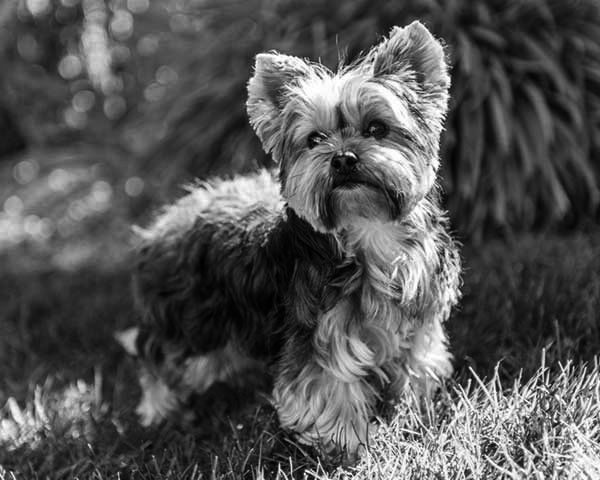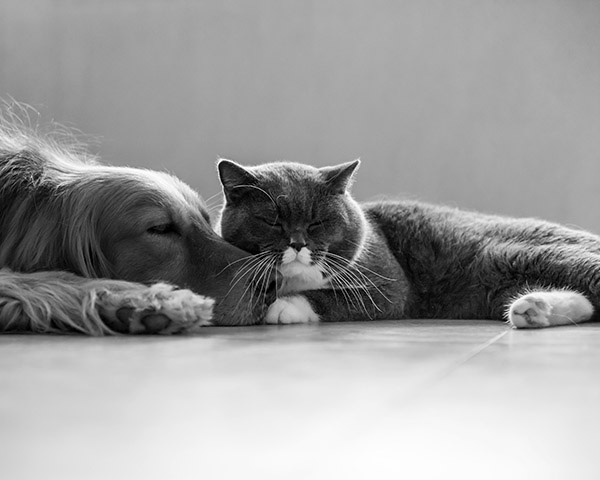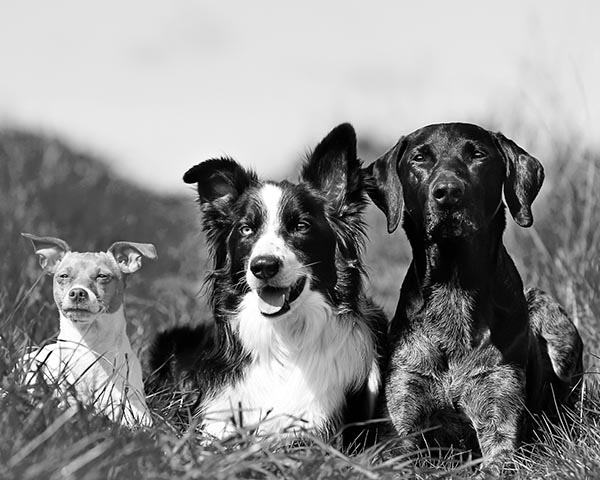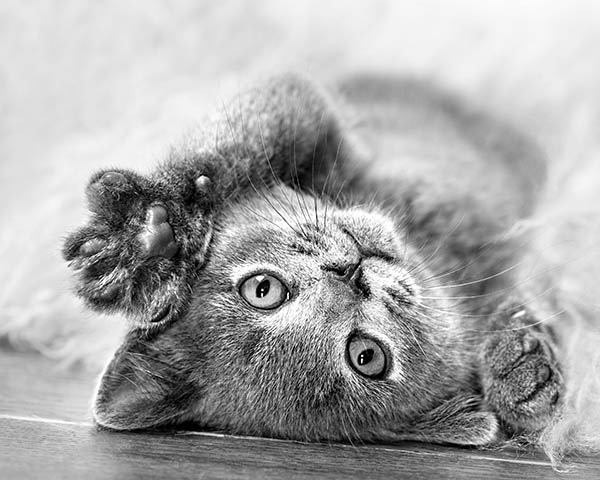Yorkshire Terrier dog breed information and advice
Yorkshire Terrier dogs may be small but have a big personality and will love you and make sure there’s never a dull moment. But when it comes to welcoming a Yorkshire terrier to your home, there are a lot of things to consider.
And that’s where this dog breed guide can come in handy. Our guide will help you understand from their temperament and behaviour to grooming and general dog care needs. This should help you decide if the Yorkshire Terrier is the right breed for you.
Yorkshire Terrier facts

| Lifespan | 12 - 16 years |
| How much | £900 - £1200 |
| Size | 20 - 23 cm |
| Weight | 1.8 - 3.1 kg |
| Colours | blue & tan, black & tan, black & gold, blue & gold |
| Grooming | 2 - 3 times a week |
| Temperament | intelligent, confident and affectionate |
| Exercise | 30 minutes per day |
Yorkshire Terrier dog insurance
Protecting your Yorkshire Terrier with dog insurance from when they’re a pup is really important. Due to their diminutive stature, Yorkshire Terriers are prone to some health issues and having pet insurance can help cover their treatment costs
Sainsbury's Bank Pet Insurance
Sainsbury’s Bank Pet Insurance is available for Yorkshire Terriers from 8 weeks of age. So, it’s good to get your puppy insurance as soon as you can, so you can cover them for their full lifespan provided you continue to renew their cover. If you are taking out a new policy for an adult dog, it will need to be done before their 8th birthday. And again provided you continue the cover, it will keep going into their retirement years.
How to care for a Yorkshire Terrier
When caring for a Yorkshire Terrier, you need to consider their welfare and what can affect their health. Here’s where you’ll find the information to give your Yorkie the care they need.
Feeding and nutrition
Yorkie puppies need to be fed 3-4 times a day, and an adult Yorkie should be fed twice a day. How much you should feed your Yorkie will be printed on the dog food packaging. Mini and teacup Yorkies will need less food than the standard size. If you are unsure, speak to your vet and they’ll give you more information about dog food and a healthy dog diet.
Ask the breeder what they fed your puppy as you should feed the same food to start to prevent an upset tummy. If you want to change food, do it slowly over time. Mix the two foods, gradually reducing the old and increasing the new.
Grooming
Yorkshire Terriers often suffer from dental problems. You can reduce the risk of this happening to your dog by brushing their teeth every day. You must use a dog toothpaste as human toothpaste is toxic to them. Take care of your dog’s teeth with dental cover.
Yorkshire Terriers are a high maintenance breed when it comes to grooming. Their hair grows long and straight and will need to be brushed and trimmed regularly to keep it in good condition and tangle free. If the mood takes you, you can experiment with their haircut, keeping it short or styling it when it’s long.
Your dog will need a bath once a month. You can either give them a bath at home or take them to a groomer and do the lot in one go.
Exercise
Exercise plays an important part in your dog’s health. You should exercise your dog for at least 30 minutes a day. If your dog is a teacup or miniature Yorkshire Terrier, they will only need 20 minutes. Yorkshire Terriers are alert dogs, so using play as a means of exercise is a good way of keeping them occupied and entertained.
Training
Yorkshire Terrier puppies can be difficult to toilet train. You’ll need to have patience and determination when house training your dog. Reward their good behaviour with treats or toys. A tip for toilet training your Yorkshire Terrier puppy is to give them lots of chances to go to the toilet. Start by letting them out every 30 minutes, then increase the time as your puppy learns.
Training and socialisation are extremely important parts of a Yorkshire Terrier’s upbringing. They can suffer from small dog syndrome and be quite a pugnacious pup around other dogs. To stop this behaviour from presenting, Yorkshire Terriers need to be trained and socialised regularly with other dogs from a very young age.
Temperament and behaviour
What they lack in height, they make up for in personality. Unfortunately, Yorkies do have a reputation of having a yappy temperament and they are known for some negative behaviour. They like to be seen and heard, so will bark if being ignored. But with some training and some puppy party socialisation and you’ll find they make wonderfully loyal and protective companions. They are known for being a ‘lap dog’ so they do love a snuggle on the sofa.
Yorkshire Terriers can suffer from separation anxiety so shouldn’t be left on their own for long periods of time.
Common health problems
With their small size come some potential health problems. Make sure you are aware of the common health issues linked to this dog breed. The sooner you spot the signs, the sooner treatment can begin and the better chance your dog has of recovering. Dog insurance will help you with unexpected vet bills, meaning that you can give your dog the health care that it needs.
Legge-Perthes disease
The cause of this condition is unknown, but it can be inherited. The blood supply is unable to reach the ball of the thigh bone which causes the bone to die and collapse. This leads to osteoarthritis in the hip joint. Hind leg lameness happens when the dog is around 5 months old, but some dogs are fully grown before showing signs. Your dog will be in pain, irritable to touch and will rarely use the affected leg. This causes loss of muscle mass making the affected leg thinner. Surgery is the best treatment, either a total hip replacement or replacing the ball with a fibrous joint at the hip. Most dogs lead a relatively normal life following surgery, but recovery is a long and expensive process that involves a lot of rehabilitation therapy such as water treadmill therapy.
Tracheal collapse
This condition causes a narrowing of the airway. Tracheal rings hold the windpipe open, creating a clear airway. These rings can become soft which narrows the airway and causes breathing difficulties. It’s common in Yorkshire Terriers as they tend to have softer tracheal rings. A ‘goose-honking’ cough that lasts more than 2 weeks is a sign of a collapsed trachea. There are treatment options for this condition but in severe cases, surgery is needed. Keeping your dog at a healthy weight will help stop this problem from happening. It’s also best to use a harness instead of a collar for walking your dog on a lead.
Luxating patella
If you notice your dog hopping on one of their back legs, they may be suffering from a luxating patella. This means that their kneecap is not sliding into the correct place, causing the leg to lock up. The kneecap will either stay there or continue to slide out of place. Your dog will be in pain and will become lame if not treated. To treat the problem, your dog will need surgery to correct the kneecap’s alignment.
So, is a Yorkshire Terrier dog right for you?
If you’re looking for a loving companion, that's small but full of life, then a Yorkshire Terrier could be the right breed for you. There are lots of things to consider such as training and grooming – a lot of grooming. But if you’re happy to devote the time to them, they’ll reward you with lots of love and affection.
As a breed, they’re more suited to a pet owner who will be able to devote the time to them and who is looking for companionship. They can be a good pet for families with older children, but Yorkies may not be the best breed of dog to have around a young family of babies and toddlers.
How long do Yorkshire Terriers live?
A standard Yorkshire Terrier has a life expectancy of 12-16 years. Mini and teacup Yorkies have a shorter lifespan of 7-9 years. To help your dog live a healthy life you’ll need to give them the right diet, exercise, grooming and training. Regular vet health checks will help your vet to spot any problems and treat them early on.
Do Yorkshire Terriers shed?
They’re not heavy shedders, but some shedding can be expected. Grooming your Yorkie regularly will remove any loose hair. You can learn how to groom a Yorkshire Terrier yourself, or you can take your dog to a professional groomer. Your dog will need brushing 2-3 times a week and trimming every 4-6 weeks.
How far can Yorkshire Terriers walk?
Yorkshire Terriers have a surprising amount of energy for a small dog. You should exercise your dog for at least 30 minutes a day. A great way to exercise your dog is to play fetch. Yorkies love to chase after a ball and can run fast on those little legs.
When is a Yorkshire Terrier fully grown?
Yorkies will be fully grown by the time they’re a year old. There are different sizes of Yorkies; the toy (standard), mini and teacup. They differ in height and life expectancy. A mini or teacup Yorkie will likely be fully grown within 9-10 months.

Browse our guides
Choose from our list of helpful guides and information

Explore dog breeds
Find out how to keep your dog healthy and happy

Cat breed guides
How to care for your cat, common health problems and more
References
Content provided from Vetstream's Vetlexicon Canis - www.vetstream.com/treat/canis 
Vetstream Ltd (online) Yorkshire Terrier. In: Vetlexicon Canis. Vetstream Ltd, UK. Website: https://vetstream.com/treat/canis/breeds-pages/yorkshire-terrier 
Renberg W & Rochat M (online) Hip: aseptic femoral head/neck necrosis. In: Vetlexicon Canis. Vetstream Ltd, UK. Website: https://vetstream.com/treat/canis/diseases/hip-aseptic-femoral-head-neck-necrosis 
Vetstream Ltd (online) Aseptic femoral head and neck necrosis (Legg Calvé Perthes disease) Owner Factsheet. In: Vetlexicon Canis. Vetstream Ltd, UK. Website: https://vetstream.com/treat/canis/owner-factsheets/aseptic-femoral-head-and-neck-necrosis-(legg-calve-perthes-disease) 
Ford R B & Tappin S (online) Trachea: collapse. In: Vetlexicon Canis. Vetstream Ltd, UK. Website: https://vetstream.com/clinical-reference/canis/diseases/Trachea-collapse 
Vetstream Ltd (online) Collapsing Trachea Owner Factsheet. In: Vetlexicon Canis. Vetstream Ltd, UK. Website: https://vetstream.com/clinical-reference/canis/owner-factsheets/collapsing-trachea 
Harari J & Arthurs G (online) Patella: medial luxation. In: Vetlexicon Canis. Vetstream Ltd, UK. Website: https://vetstream.com/clinical-reference/canis/diseases/Patella-medial-luxation 
Vetstream Ltd (online) Luxating patella Owner Factsheet. In: Vetlexicon Canis. Vetstream Ltd, UK. Website: https://vetstream.com/clinical-reference/canis/owner-factsheets/luxating-patella 
Terms and conditions
Important information
Sainsbury's Bank plc, Registered Office, 33 Holborn, London EC1N 2HT (registered in England and Wales, no. 3279730) is authorised by the Prudential Regulation Authority and regulated by the Financial Conduct Authority and the Prudential Regulation Authority (register no. 184514). Sainsbury's Supermarkets Ltd is an appointed representative of Sainsbury's Bank plc.
Sainsbury's Bank plc acts as an introducer to Pinnacle Insurance plc who is authorised by the Prudential Regulation Authority and regulated by the Financial Conduct Authority and the Prudential Regulation Authority (register number 110866). Registered Office: Pinnacle House, A1 Barnet Way, Borehamwood, Hertfordshire, WD6 2XX. Sainsbury’s Bank plc and Pinnacle Insurance plc are not part of the same corporate group.
